Welcome to one of the most active flamenco sites on the Internet. Guests can read most posts but if you want to participate click here to register.
This site is dedicated to the memory of Paco de Lucía, Ron Mitchell, Guy Williams, Linda Elvira, Philip John Lee, Craig Eros, Ben Woods, David Serva and Tom Blackshear who went ahead of us.
We receive 12,200 visitors a month from 200 countries and 1.7 million page impressions a year. To advertise on this site please contact us.
|

|
|
RE: Uncompressed / lossless audio files
|
You are logged in as Guest
|
|
Users viewing this topic: none
|
|
Login  | |
|

   
Richard Jernigan
Posts: 3430
Joined: Jan. 20 2004
From: Austin, Texas USA

|
 RE: Uncompressed / lossless audio files (in reply to JasonM) RE: Uncompressed / lossless audio files (in reply to JasonM)
|
|
|
In the late 1980s I started reading Stereophile magazine--while it was still in the small format. I thought they were either nuts, or the world's greatest deadpan humorists. They kept writing about how different CD players sounded different.
Before moving to Kwajalein in the central Pacific, there were a couple of things I wanted: a good classical guitar and a good set of headphones. I bought a spruce/Brazilian "doble tapa" (actually a double back) from Manuel Contreras Sr. in Madrid.
Though Santa Barbara is a fairly small town, there were two "high end" audio shops there. One of them was run by an engineer who used to work at the Delco defense plant. He demonstrated a pair of six foot ( 2 meters) tall electrostatic speakers. I asked him to play one of the Julian Bream CDs made in Wardour Chapell by the well known recording engineer, speaker designer and entrepreneur John Bowers. The speakers sounded horrible--extremely overemphasized high frequencies. I asked the owner if he wanted to know what a guitar really sounded like. He said,"Sure." I went home, brought back the Contreras, and played it sitting between the speakers. The shop owner said he was amazed.
He had a pair of Stax Signature Lambda headphones on sale. I listened to the Bream CD on them, and bought them on the spot. The owner looked a little disappointed. He said, "I thought I was going to get to take them home."
Next I went around to various places and listened to CD players with the Staxes. Guess what? The CD players sounded different. I bought a mid-range Sony: $350, when consumer decks were going for about $150. I was happy at Kwajalein for a while. The Staxes are still the cleanest transducer I have ever heard, but they don't kick you in the chest on the bass like a good speaker.
I started carrying around the Staxes and a half dozen CDs I liked when I traveled to USA, Europe and Asia. The $1,000 Sony and Meridian CD players sounded a little better than mine, but not worth that much money to me. I heard lots of $10-25K systems that sounded really, really terrible--and a few that were pretty good, mainly in England and Germany where people actually listened to live classical music. A small shop in Honolulu gave me a good deal on some used B&W 803 speakers and a new Adcom amp. I was fairly happy.
A couple of years later I stopped by the Honolulu shop and plugged the Staxes into a Linn CD player. It cost as much as the other two high end jobs, but sounded much better to me. My investments had been going pretty well, and you can save some cash working at Kwajalein, so I bought the Linn.
Next time I was in Houston, I dropped by the Linn dealer. Ended up buying a pair of Keltik speakers, and had them shipped to Kwaj--all 440 pounds (200 kilos).
Linn had been following a fairly radical path in speaker design for a while. Instead of putting an analog crossover network in the box with a set of speaker drivers, they designed daughter cards to go on the front ends their amps. Each speaker driver gets a separate channel, with its own frequency and phase tailored by the daughter card on its amp channel.
The Keltiks were the best dynamic speakers I ever heard. Just a tiny bit less clean and detailed then the Quad electrostatics, but they will really kick you in the chest on both classical and rock, which the Quads can't do.
A friend said he was interested in buying the Adcom and B&Ws, along with my Sony CD player. He and his wife came to listen. She is a professional violinist, played in various symphony orchestras, including Boston. Another guy came along to listen as well. He is an M.I.T. PhD electrical engineer, who worked as a professional sound engineer before he went to M.I.T. He worked on some of the classical guitarist Christopher Parkening's commercial recordings. All three said the Linn rig was head and shoulders above the Adcom and B&Ws.
I've never tried to tell one amp from another. I don't know whether I could. But the difference between the Linn rig and the other one was obvious right off the bat. I think a big part of it may be moving the frequency shaping to the front end of the amps, taking the somewhat non-reciprocal crossover network out of the feedback loop. But another factor may be that each of the four drivers in each box gets its own 200 watt amp channel.
The only time I entered an audio shop after I bought the Linn rig was after I retired and moved back to Austin. I wanted a setup to go in my computer room. I bought some used Linn bookshelf speakers, a used Linn subwoofer and a used Linn FM tuner/CD player combo, all for a $few hundred. I can play Youtube stuff over Wi-Fi. If I want to listen to something critically I get out the Staxes, but the the computer's sound card is the weak link, along with Youtube lossy compression when it's low quality.
I haven't tried distinguishing high bitrate MP3s from uncompressed high quality audio--never had any reason to.
I don't consider myself an audiophile. I just wanted some gear that had a tonal balance about like that of a symphony orchestra in a good hall, which includes powerful bass when called for, and where you could hear some detail in a good recording. No recording sounds like the real thing, but it's surprisingly rare to hear a rig that meets even the few requirements in the second sentence of this paragraph.
And it's rare to hear a recording that actually sounds pretty much like a guitar. Engineers like to pile on a bunch of processing, and players seem to like it--if in fact they have any control over the final product.
Most professional classical musicians I know have pretty cheap sound systems. Most of them say, "It never sounds like the real thing, so why spend a bunch of money?"
RNJ
|
|
|
|
REPORT THIS POST AS INAPPROPRIATE |
Date Apr. 22 2018 1:49:28
 |
|

  
Ruphus
Posts: 3782
Joined: Nov. 18 2010

|
 RE: Uncompressed / lossless audio files (in reply to Ruphus) RE: Uncompressed / lossless audio files (in reply to Ruphus)
|
|
|
What should matter the most on CD players would be D/A convertors and the avoidance of glitches through clocking concept. Also, as common with audio gear, I assume that rigid PSUs may be helpful. Further large scale investments into consistent turning similar to efforts with high-end turntables, I as layman assume to be of no true contribution.
In his seven or so places in Europe and USA my brother used to have all different rigs. From above mentioned sorts of 2m tall ribbon speakers, over quadrophony to fine stereo builds.
To my impression the most spatial one used to be a combination from Bang & Olafson, but that might have had to do with room and placement.
From his place in Switzerland I have two large three-way speakers, so boutique that you can´t find a single hint about the maker on the internet, driven by Luxman´s second best amp of the firm´s best period.
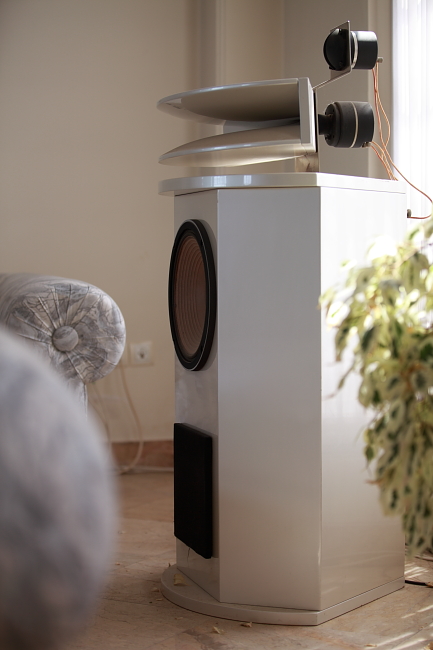
These speakers used to come in for the price of a BMW of that time. Inside looking like some palaeo-tech with caps of the size of beer cans.
As impressive as they seem to sound to everyone, if I´d put my ADAM near field monitors next to them, the boutique thingies would appear as if from under a blanket.
And yet, that smoothness, space and tranquility of these boxes, apparently built for pop music, has some enchanting quality to it. Everything is so pierce-free and never obtrusive. You can listen for hours without ever experiencing fatigue. And it surprises time and time again to realize at what levels you have been listening (inspite of the vol. pot residing at only ~7-8 o´clock) without sensing any screaming loudness. (Every other time, sitting in lively rounds -at a fair distance from the stereo- , yelling in need of overcoming the music in the background, still never ever anyone being annoyed "by noise". -Not even me, who with age is becoming more and more sensible to audible interference and noise.)
Something you could probably not have with most of rigs, and lesser even with the Adams (who have been made for another task, anyway.)
Regarding balanced sound field for most natural and translating feedback, in the audio engineering community simple concepts like Yamaha´s NS10s or even just ghettoblasters have proven useful- (as complement to surgical auditioning through elaborate speakers).
And there seems something to single cones.
Like those Blaupunkt balls that I had hanging from the ceiling in the seventies. As mentioned before, sitting under them, with stellar music enjoying high-life with friends visiting from home town, after hours they asked where the music was coming from; thinking the BPs to be lamps.
If I am not mistaking single cones (almost like with a kind of insider tip) appear to be rediscovered these days for consumer rigs. And if they can make up for a missing of dedicated HF tweeters, then maybe on the other hand the splitting of frequencies (and in consequence encountering either gap or build-up of overlapping contents, or both in the same time) might be meaning a fundamental disadvantage, which again, to compensate for takes a lot of technical effort.
When was the last time that you guys listened to a pair of quality-built single cones?
Images are resized automatically to a maximum width of 800px
 Attachment (1) Attachment (1)
|
|
|
|
REPORT THIS POST AS INAPPROPRIATE |
Date Apr. 22 2018 12:10:54
 |
|

   
Richard Jernigan
Posts: 3430
Joined: Jan. 20 2004
From: Austin, Texas USA

|
 RE: Uncompressed / lossless audio files (in reply to Richard Jernigan) RE: Uncompressed / lossless audio files (in reply to Richard Jernigan)
|
|
|
Strictly speaking the DAC is the integrated circuit which takes in a digital signal and outputs an analog one. All the DACs that I know of put out a "stairstep" analog signal which still contains a strong component of the sampling frequency. For accurate reproduction the sampling frequency must be more than twice the highest frequency in the original signal. For human hearing the highest frequency is usually taken as something at or below 20 KHz. Few adults in industrialized countries can hear anything near 20 KHz.
There is some question whether audible transients like sharp clicks are accurately represented by signals band limited to 20KHz.
In modern CD players, the digital signal is typically oversampled. Samples in the 44.1 KHz digital stream are interpolated to produce a digital signal at some multiple of 44.1 KHz. Thus the sampling frequency component in the output analog signal from the DAC is much higher than 44.1 KHz.
The reason for this is to make the reconstruction filter in the analog domain, which filters out the sampling frequency, easier to implement. It can have a more gradual rolloff above 20 KHz. Analog filters with gradual rolloffs are easier to implement without introducing artifacts, than were the "brick wall" filters of the earliest CD players, which had very steep rolloffs, and sounded bad.
Different players can use the same DAC chip, but implement the analog reconstruction filter differently, as well as other elements of the analog signal path. Such players can sound different.
The clock implementation in early players contributed distortion.
The CD doesn't rotate at constant speed. It starts around 500 rpm at the beginning when the laser reader is near the center of the disk, and slows gradually to around 200 rpm as the read head moves to the outer edge. This is to cause the track of bits on the disk to pass over the read head at constant speed--approximately. No mechanism is perfect. The drive mechanism monitors the bit rate, and controls the speed via a feedback loop to the drive motor.
The bit rate collected in the drive mechanism was used in early players as the basis of the clock that controlled the decoding, error correction, and the feed of the data into the DAC. A phase locked loop with a relatively long time constant was locked to the collected bit stream, providing a reasonably steady clock. The designers of the early CD players didn't realize how stable the clock needed to be, not to introduce distortion.
Note that the data recorded on the disk contains error-correcting code that is at least 30% as big as the data itself. Pick up one of your CDs and hold it up to the light. Use a magnifier if you need to, but you will see thousands of tiny holes in the metal reflective film sputtered onto the disk as it is made. This requires a robust error correction process, carried out in a specialized computer chip in the player.
Unfortunately the non-return-to-zero recording
https://en.wikipedia.org/wiki/Non-return-to-zero
of the encoded data onto the disk makes the bit rate collected by the drive mechanism a poor basis for a clock. The result was persistent clock jitter, which turned out to be quite audible in the early players.
The solution was to add a little circuitry. A stable clock was generated, probably from a quartz crystal oscillator. This was used to drive the decoding and the feed to the DAC. The bit rate collected by the drive mechanism was compared to the stable clock to derive the error signal for the drive motor.
More than one block of digital data are read from the disk and stored in memory. The stable clock then herds them through the rest of the process.
RNJ
|
|
|
|
REPORT THIS POST AS INAPPROPRIATE |
Date Apr. 25 2018 23:08:19
 |
|

  
Ruphus
Posts: 3782
Joined: Nov. 18 2010

|
 RE: Uncompressed / lossless audio files (in reply to Richard Jernigan) RE: Uncompressed / lossless audio files (in reply to Richard Jernigan)
|
|
|
Yep, the makers of finer gear like Lavry, Weiss & co. used to always emphasize how important the analog circuit in convertors is.
In discussions about why steep filter curves tend to produce artifacts and as to why inaudible frequency contents could matter altogether, there was mentioning of reciprocal effects into audible range.
Again, isn´t it interesting how early digital audio is being explored as handicapped, whereas back then at commercial rise of the D-tech, people and special editorials would be enthuse over stellar characteristics, based solely on amazing appearing specs. (Until, -as mentioned already, years later listeners of classical music started complaining about brittle violin sound ... And then gradually, common sense would follow on track of those times digital audio imperfection.)
Mark Twain´s whether forecast still at work, just like thousands of years ago.
|
|
|
|
REPORT THIS POST AS INAPPROPRIATE |
Date Apr. 27 2018 14:12:25
 |
|

   
Richard Jernigan
Posts: 3430
Joined: Jan. 20 2004
From: Austin, Texas USA

|
 RE: Uncompressed / lossless audio files (in reply to Richard Jernigan) RE: Uncompressed / lossless audio files (in reply to Richard Jernigan)
|
|
|
Aliasing occurs in digital recording when there are frequency components in the recorded signal that are greater than half the sampling frequency. The graph illustrates the cause.
The red curve is a cosine wave of 0.9 Hz (cycles per second). Note that it is nearing its peak at one second, but not quite there yet. The yellow line is a cosine wave of 1.1 Hz. At one second it is just past its peak, on the way back down. The blue stairstep is the result of sampling the red curve at 2 Hz, that is, a sample every half second. But wait, the blue curve is also the result of sampling the yellow curve. At a 2 Hz sample rate, the curves are indistinguishable, they yield exactly the same samples. A simple trigonometric identity shows that the phenomenon persists indefinitely.
This is why the analog signal must be filtered before it is digitized. If it were not, frequencies a given distance above half the sample rate would be recorded as signals the same distance below half the sample rate. (In the example, 1+1/10 Hz is recorded as 1-1/10 Hz.)
In the early days of commercial digital recording, modified video cassette recorders (VCRs) were used to digitize. Assuming human hearing doesn't extend beyond 20 KHz, a sample rate of 40 KHz is fast enough to capture audible sounds. Reasonably straightforward mods to VCRs yielded a 44.i KHz sample rate, still the CD standard. This meant that frequencies in the incoming signal above 22.05 KHz had to be eliminated while still in the analog domain.
The cutoff frequency of 22.05 KHz was uncomfortably close to the highest desired frequency, 20 KHz, resulting in awkward problems of analog filter implementation. The ones used in the early days sounded bad.
These days much higher sample rates are readily achievable. At a 96 KHz sample rate, available in a lot of consumer equipment, only signal content above 48KHz has to be eliminated to prevent aliasing. The anti-aliasing filter can have a much gentler roloff in the range from 20 to 48 KHz, making them easier to implement, and better sounding.
RNJ
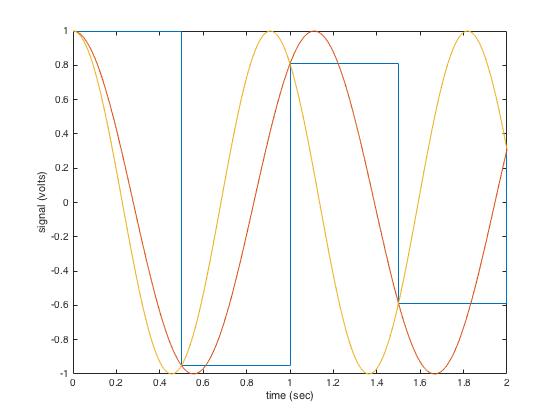
Images are resized automatically to a maximum width of 800px
 Attachment (1) Attachment (1)
|
|
|
|
REPORT THIS POST AS INAPPROPRIATE |
Date Apr. 28 2018 5:37:26
 |
|
 New Messages New Messages |
 No New Messages No New Messages |
 Hot Topic w/ New Messages Hot Topic w/ New Messages |
 Hot Topic w/o New Messages Hot Topic w/o New Messages |
 Locked w/ New Messages Locked w/ New Messages |
 Locked w/o New Messages Locked w/o New Messages |
|
 Post New Thread
Post New Thread
 Reply to Message
Reply to Message
 Post New Poll
Post New Poll
 Submit Vote
Submit Vote
 Delete My Own Post
Delete My Own Post
 Delete My Own Thread
Delete My Own Thread
 Rate Posts
Rate Posts
|
|
|
Forum Software powered by ASP Playground Advanced Edition 2.0.5
Copyright © 2000 - 2003 ASPPlayground.NET |
0.078125 secs.
|


 Printable Version
Printable Version





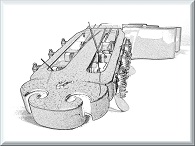


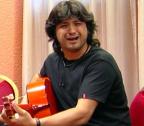

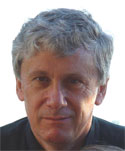
 New Messages
New Messages No New Messages
No New Messages Hot Topic w/ New Messages
Hot Topic w/ New Messages Hot Topic w/o New Messages
Hot Topic w/o New Messages Locked w/ New Messages
Locked w/ New Messages Locked w/o New Messages
Locked w/o New Messages Post New Thread
Post New Thread